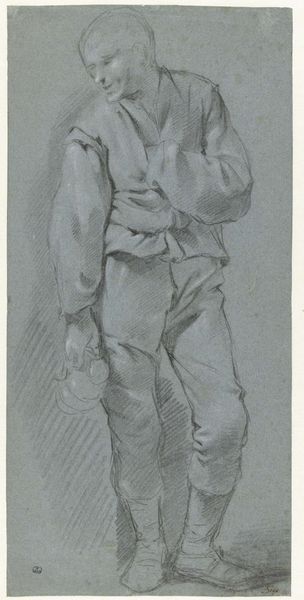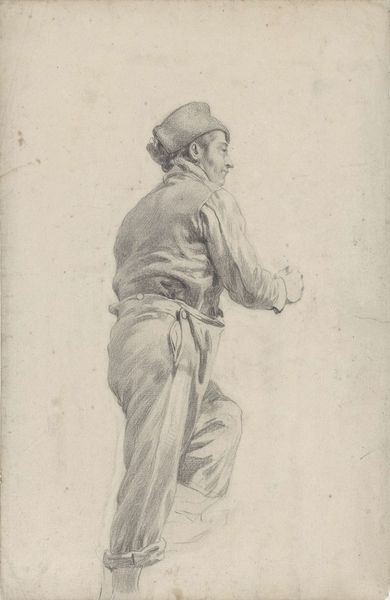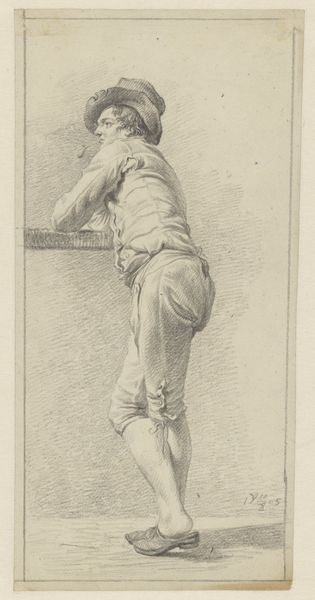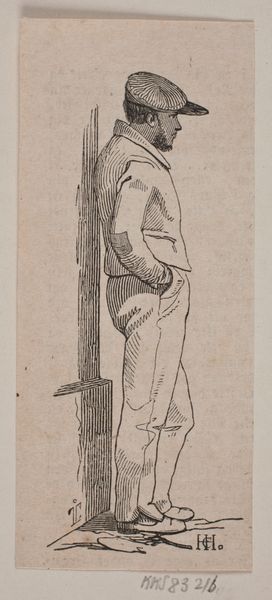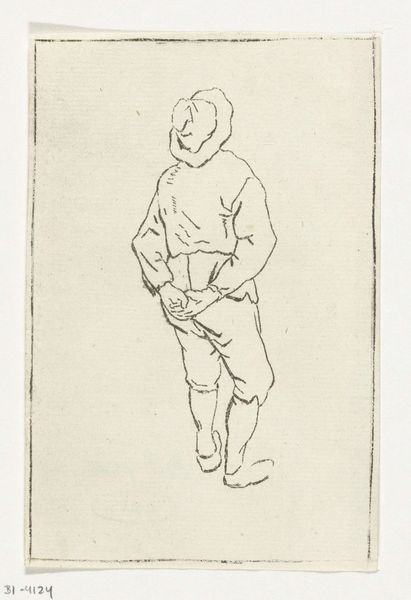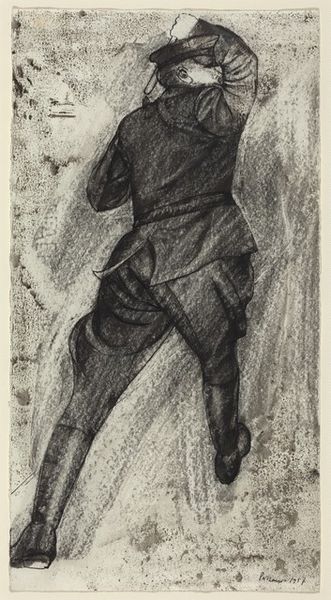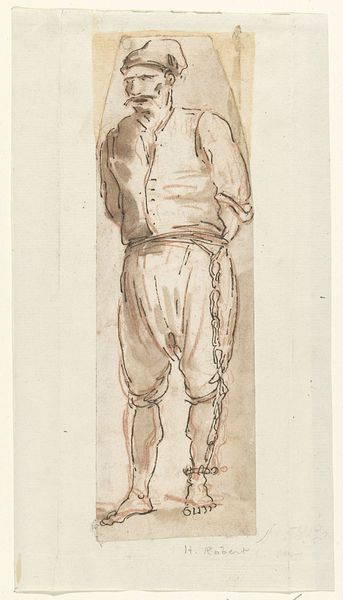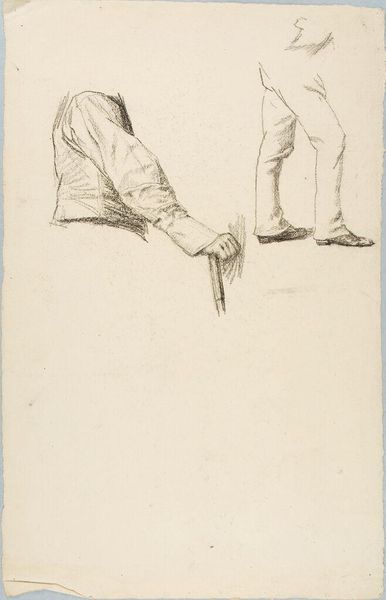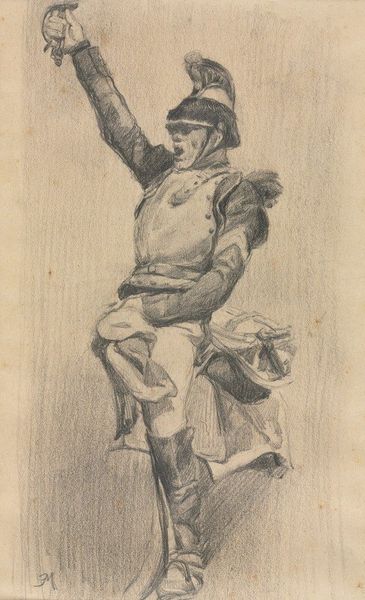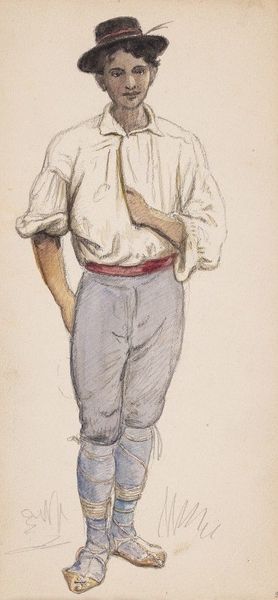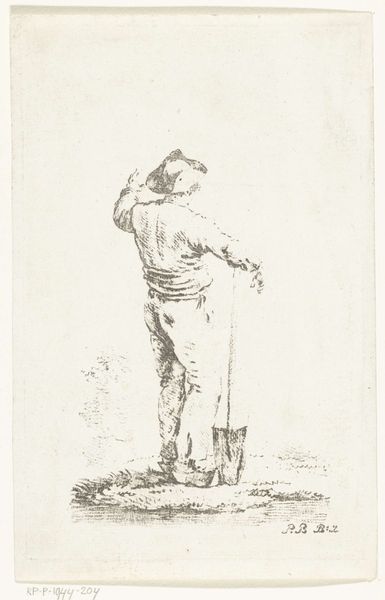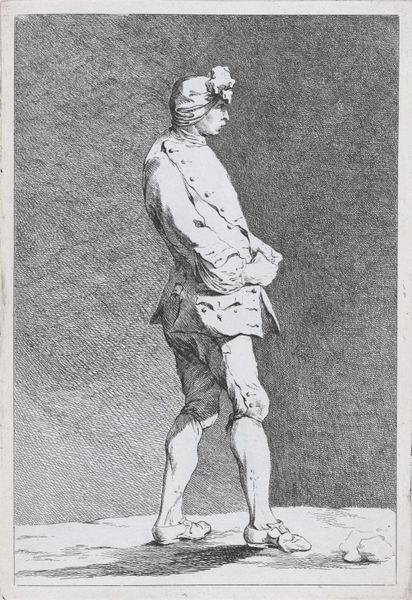
Dimensions: 171 mm (height) x 82 mm (width) (bladmaal)
Editor: This is "A Standing Peasant Boy in Clogs" by Nicolai Abildgaard, created sometime between 1743 and 1809. It's a pen and ink drawing currently housed at the SMK in Copenhagen. The subject has a somewhat detached and sullen air, don't you think? How would you interpret this work, considering the materials used and the period in which it was created? Curator: Well, first, consider the readily available materials. Pen and ink were economical and widely accessible, making art production possible for a broader spectrum of society. How might that impact the representation of peasantry in art? Editor: I suppose it makes it more likely that someone like Abildgaard would choose a subject from everyday life rather than a historical or mythological figure. Curator: Exactly. The material reality allows for, even encourages, depictions of common labor and the realities of rural existence. Notice the clogs—wooden footwear indicative of working-class status and manual labor. The very act of drawing him, highlighting this choice of clothing, becomes a commentary on social hierarchy and material conditions. What do you make of his pose? Editor: Arms crossed, leaning slightly. Maybe a sign of defensiveness or simply being resigned to his position? Curator: Precisely. This stance, rendered using cheap and available materials, allows for a discourse on the subject’s position in society. It encourages consideration of class distinctions, and who can afford to be represented, and how, in artworks. This drawing then prompts a discussion about labour, tools, social mobility and what it meant to be working-class in 18th century Denmark. Editor: So, the very materials themselves influence the artistic choices and the social commentary within the work. I hadn’t thought of it that way before. Curator: Thinking about material production and context adds depth to our understanding of art.
Comments
No comments
Be the first to comment and join the conversation on the ultimate creative platform.

